Nowadays, when almost everything we could want is available with a click of a button– it can be hard to visualize just how much goes into all of our favourite things. Surfaces and countertops from Stoneworks are no exception! Our customer service is so seamless, you may wonder if we pulled your custom order out of the ground as-is. Of course, millions of years and thousands of work-hours go into each slab behind the scenes. Read on for more!
STEP 1
Millennia of geothermal activity leads to the creation of a specific mineral, sought after for its durability and beauty.
STEP 2
A force of labourers and machines pull the mineral from the ground and divides it into slabs for commercial sale. Alternatively, some of this mineral may be reengineered into a synthetic material.
STEP 3
Stoneworks buyers select the mineral that will become your surface or countertop. Their years of experience give them a keen eye for details and defects. Synthetic materials are also purchased with care for its quality and resilience.
STEP 4
Our technicians take your chosen slab and mount it onto Stoneworks’ industrial saw table. Most slabs of material weigh upwards of hundreds of pounds.
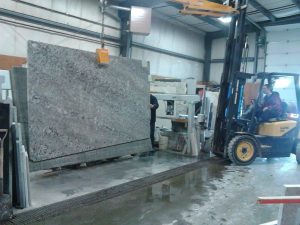
STEP 5
Sophisticated software is loaded with a custom layout, allowing a “bridge saw” to precisely cut the perimeter of your surface or countertop.

STEP 6
The custom shapes are then put on a high-tech CNC (Computer Numerical Control) stone mill that removes any cutouts and polishes the edges down to the narrowest degree. This exact control allows for near-unlimited customization.

STEP 7
Stoneworks’ experienced craftsmen then go over the piece(s) by hand, ensuring each is cut, shaped and polished to perfection. Any defect or mistake is corrected in-house so you always end up with a quality product.
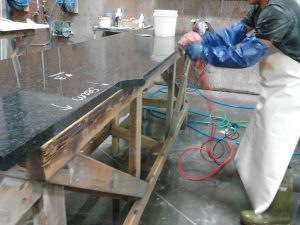
STEP 8
Careful technique and protective, A-frame carts are used to glide your custom product to its destination. Our expert delivery and installation service will carry your custom surface or countertop across the finish line!
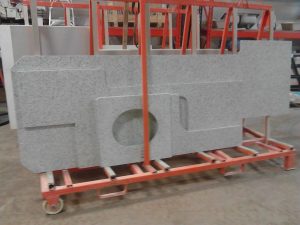
…And that’s it! It may take eons to lead up to this point, but you are closer than you’ve ever been to improving your home or business with a custom countertop or surface. The real first step happens when you contact or visit us here at Stoneworks. Get the ball rolling on your dream project today!

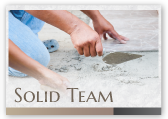
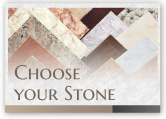

 If you currently have or are planning to have a
If you currently have or are planning to have a 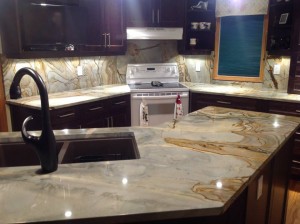 Whether you are admiring
Whether you are admiring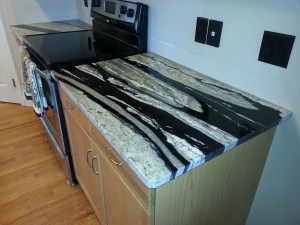 If you currently have or plan to have a
If you currently have or plan to have a 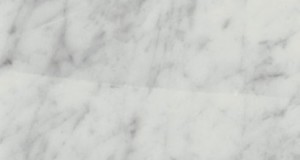 From columns of classical architecture to the steps of modern statehouses; from elegant eating areas to awe-inspiring works of art– marble has captured the human imagination for centuries. The lustre of
From columns of classical architecture to the steps of modern statehouses; from elegant eating areas to awe-inspiring works of art– marble has captured the human imagination for centuries. The lustre of 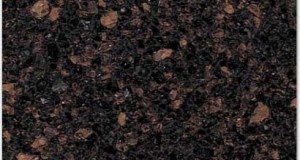 Quartz often gets overlooked as a countertop option. It’s time to change this!
Quartz often gets overlooked as a countertop option. It’s time to change this!  Many people veer away from natural stone counters because they are afraid of the upkeep; however, these countertops are sometimes easier to take care, and longer lasting, than their artificial counterparts. Are you thinking of getting
Many people veer away from natural stone counters because they are afraid of the upkeep; however, these countertops are sometimes easier to take care, and longer lasting, than their artificial counterparts. Are you thinking of getting 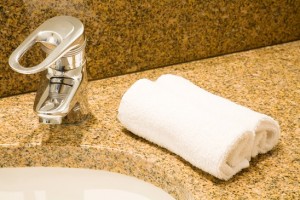 A granite countertop is an investment that can last for years if properly taken care of.
A granite countertop is an investment that can last for years if properly taken care of.  Marble is known for its beautiful patterns and high quality look and feel; however, it is also known as being difficult to care for and expensive. Would you believe us if we told you the last two statements weren’t true? It’s time to clear the air! Read on for some marble myth-busting fun.
Marble is known for its beautiful patterns and high quality look and feel; however, it is also known as being difficult to care for and expensive. Would you believe us if we told you the last two statements weren’t true? It’s time to clear the air! Read on for some marble myth-busting fun.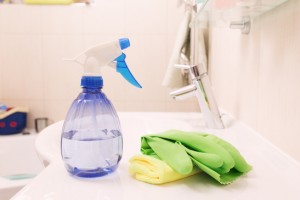 Quartz is considered one of the hardest minerals on the planet, after diamonds, of course, so it makes a very durable countertop.
Quartz is considered one of the hardest minerals on the planet, after diamonds, of course, so it makes a very durable countertop. 


